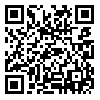Volume 20, Issue 7 (2018)
JAST 2018, 20(7): 1455-1466 |
Back to browse issues page
1- Department of Crop Production and Plant Breeding, School of Agriculture, Shiraz University, Shiraz, Islamic Republic of Iran.
Abstract: (2344 Views)
A 2-year field experiment was conducted to evaluate the effect of N sources [Ammonium Nitrate (AN), Ammonium Sulfate (AS), Sulfur Coated Urea (SCU), and Urea (U)] and split application ((1/4,3/4,0), (1/3,1/3,1/3), (1/2,1/2,0), and (1/3,2/3,0)) on weed growth, safflower (Carthamus tinctorius L.) yield, and N Use Efficiency (NUE), using a split split-plot design with three replications, at the Experimental Research Station of Shiraz University, in 2015 and 2016. In weedy plots, applying AN-fertilizer in a split pattern of 1/2,1/2,0 (applying half of the N at sowing time and the rest at stem elongation) increased weed infestation. This treatment enhanced total weed N Uptake Efficiency (NUpE) up to 5% compared to U-fertilizer and similar split pattern. In weed free plots, the highest seed and oil yields (3303.52 and 753.09 kg ha-1, respectively) were achieved by AN- and U-fertilizers in a split pattern of 1/2,1/2,0. Applying AN fertilizer and split patterns of 1/3,2/3,0 (one third of N at sowing and two thirds at stem elongation) and 1/4,3/4,0 (one quarter of N at sowing and three quarters at stem elongation) maximized safflower NUpE (0.78 kg kg-1). Applying U fertilizer and split pattern of 1/2,1/2,0 increased safflower ability to compete vs. weeds up to 20% compared to AN-fertilizer. Overall, in order to improve safflower yield and NUE and control weed, applying U-fertilizer and split application of 1/3,2/3,0 or 1/4,3/4,0 can be suggested as a component of integrated weed management programs.
Article Type: Research Paper |
Subject:
Agricultural Economics/Agriculture Marketing and Supply Chains
Received: 2017/06/9 | Accepted: 2018/12/8 | Published: 2018/12/8
Received: 2017/06/9 | Accepted: 2018/12/8 | Published: 2018/12/8
| Rights and permissions | |
 |
This work is licensed under a Creative Commons Attribution-NonCommercial 4.0 International License. |


